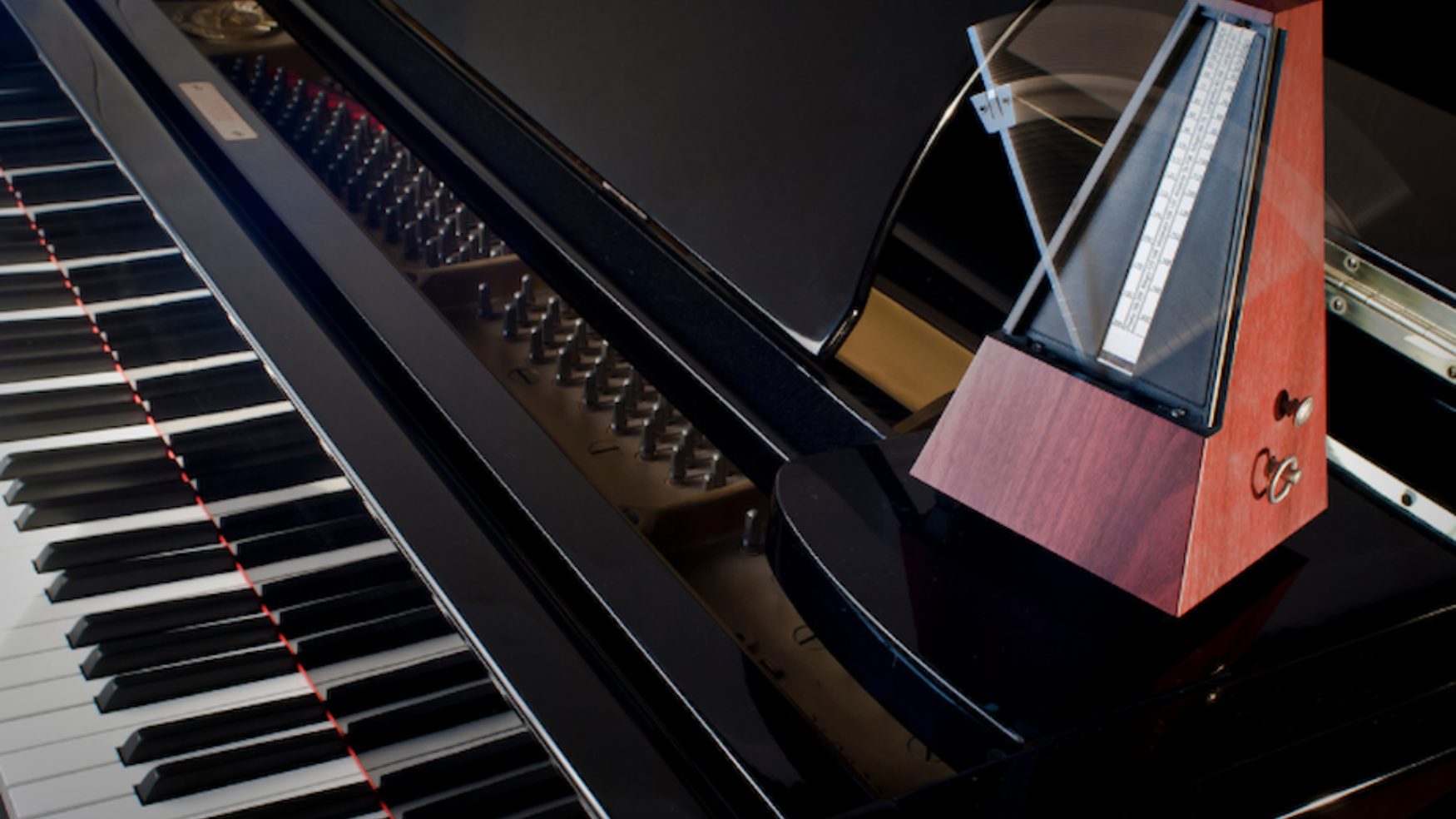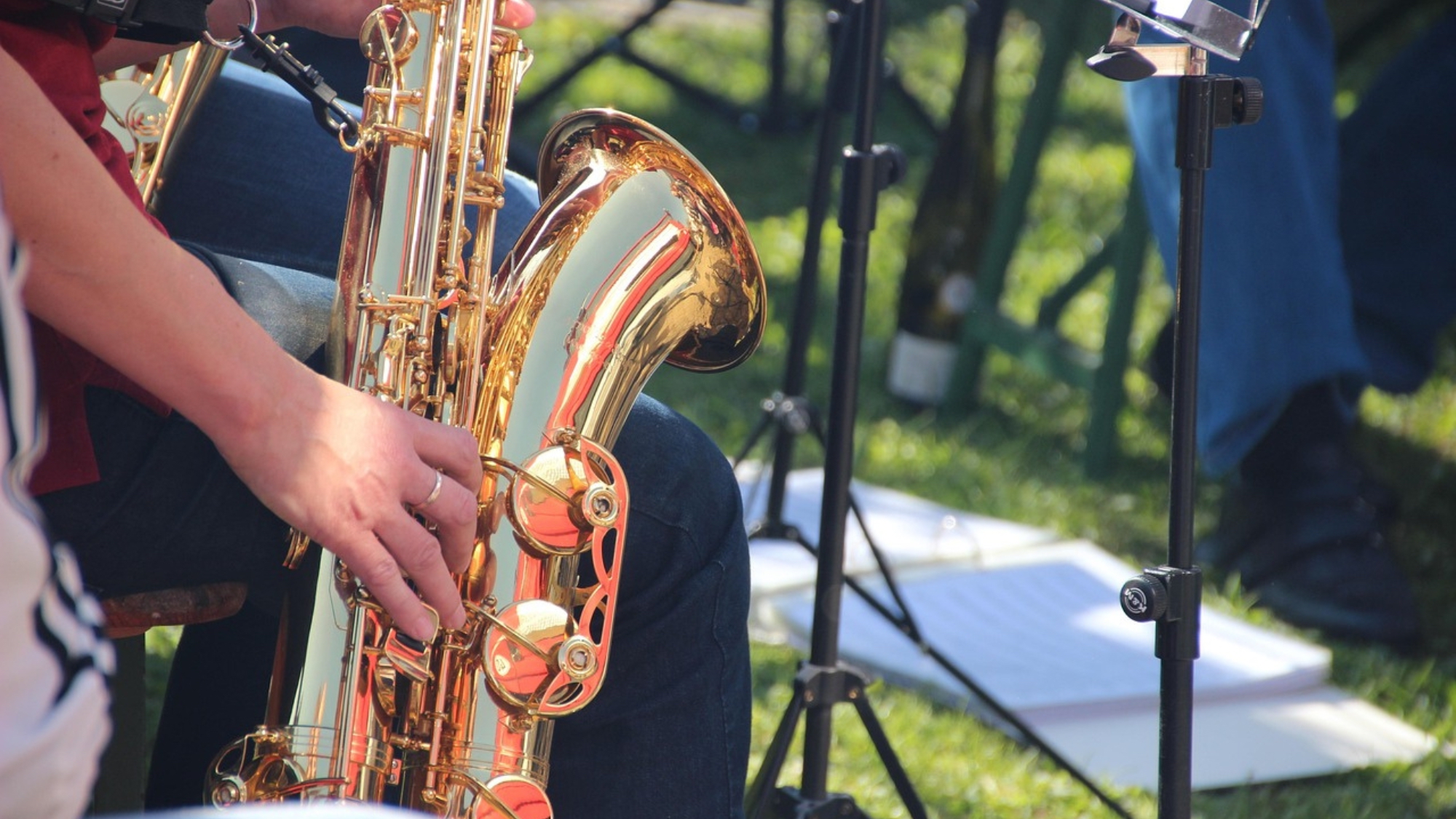by Fred Sturm & David Pelow
Aural Techniques for Teaching Jazz Improvisation
The instructional techniques that follow are intended to introduce the abstract nature of jazz improvisation from a totally aural perspective. The concepts range from simple imitation to “free” group improvisation, providing the instructor with a variety of avenues from which to address jazz as a unique musical language. The aural techniques can be applied gradually in school jazz ensemble rehearsals or sessions. The modular design of the method offers flexibility and considerable space for the instructor to shape the activities to the level of the group involved. Directors with little or no jazz experience will find the information highly accessible.
Body Rhythms
Activities: Establish a constant pulse and instruct all participants to tap their feet to the beat. Accent the first of every four beats to establish the feeling of a 4/4 measure. Clap a measure-long motive and ask the group to imitate the pattern in the bar that follows; repeat the motive until the group responds accurately. Gradually alter the patterns, presenting more complex rhythms, altering the dynamics, and shifting accents in the measure. Ask individual students to serve as lead clapper and point out the improvisational role they will play as they generate original patterns. Repeat the process in 3/4 time. Advanced music students will also benefit from repetitions in odd meters. When the group is comfortable responding to one-measure patterns, expand the motives to two bars and eventually four.
Objective: This technique will guide the student in establishing an internal basic pulse while responding in direct imitation to a second level of rhythms related to the pulse. By reducing the activities to the common denominators of hands and feet, we stress “time” and simple rhythmic/dramatic response. When a student serves as the leader, stress creating a variety of rhythms, accents, and dynamics that comfortably fit the structure of the measure(s) and illustrate how the motives must be presented clearly in order to be imitated readily by the group.
Call and Response
Activities: Instruct the group drummer to play a repeating medium-tempo swing pattern. Inform the group that you will use only concert Bb and one 4/4 measure and ask them to repeat your motive in the second measure. All participants (including bass, guitar, keyboards, and drum set snare drum) imitate the bar-long motive verbatim with all articulations, infections, and dynamics. Eventually expand phrase length to two measures and even four, continuing to use only concert Bb and carefully mixing the dramatic effects. Ask individual students to serve as call leaders. Expand the tonal field to TWO pitches (Bb and C) over one, two, and four bar phrases. Continue to employ various dramatic effects and call upon students to act as leaders. Gradually employ added pitches of concert D, F, and G (resulting in scale tones 1, 2, 3, 5, 6 in Bb or Bb pentatonic scale). Expand by adding Eb (4) and A (7) to fill out Bb major scale. You can similarly employ other scales and modes as you see fit.
Variation: When students are comfortable with direct imitation, explain how an individual might respond to the leader’s “call” with an improvised “response.” One can (1) “paraphrase” the call by slightly embellishing or ornamenting it, (2) mirror the rhythms of the call but offer different tones, (3) use the tones presented in the call but create new rhythms, or (4) improvise a response like one might follow a question with an answer when speaking.
Objective: As an obvious sequel to the first technique, the call and response activity expands the pulse beyond the internal body level and places the “time” mechanism in the hands of the drummer. The group is now expected to respond on predetermined pitches and reflect the nuances of the jazz language presented in the “call” by the leader (bends, scoops, falls, growls, vibrato) as well as basic dramatic variations of dynamics, articulation, and accents. As the tonal fields grow to incorporate more than three tones, outline larger intervals with step-wise lines before attempting to execute large leaps. The object of the variation (improvising the “response“) will be to fashion some musical connection between the two ideas; while the “call” will be essentially improvised, the “response” should be musically related to the call but independently generated by the imagination of the responding player.
Find My Pitch
Activities: On any instrument, play any pitch for the group for three to five seconds. Ask the group (place drummers and percussionists on mallet keyboards) to imitate the pitch VOCALLY (in any comfortable octave). Then instruct all to search for the note on their respective instruments (again in any comfortable octave). Repeat the process until all participant have found the pitch. Select arbitrary pitches to follow and repeat the process. Ask for tones from all of the different instruments in the group (players will ordinarily have more difficulty imitating pitches generated by the lowest and highest instruments) .Expand to incorporate two pitches. Begin with smaller, constant intervals.
Objective: This technique will exercise the ear and improve the student’s ability to discriminate pitch and imitate played sounds. The activity will also dramatically improve relative pitch. Jazz soloists must be able to technically configure sounds that they hear or imagine, and such exercises in pitch discrimination will improve the response time between the mind and the fingers.
Bandworld Vol. 6, #1, p.14 (August – October 1990)






